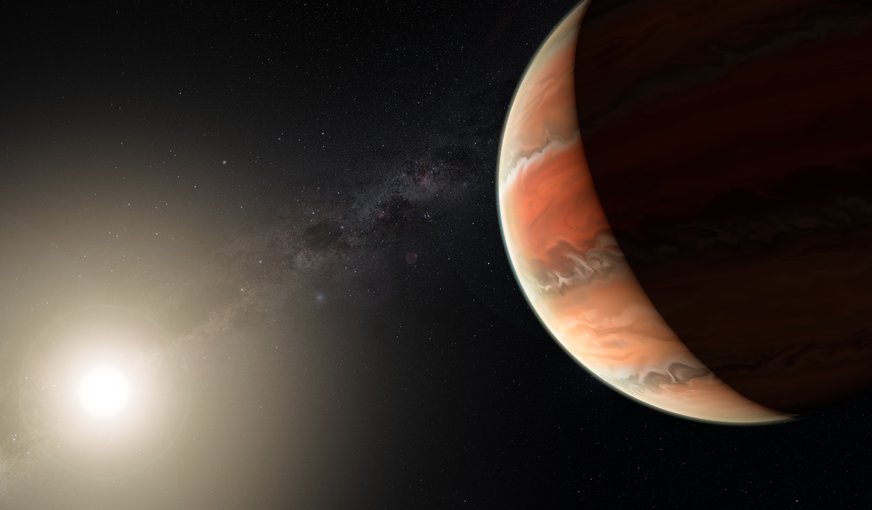
April 8, 2019
Research Highlight
Atmospheric Details of an Extrasolar Planet
New data on the atmosphere of WASP-19b

WASP-19b orbits the star WASP-19 roughly 815 light-years away from the Solar System.Image credit: ESO/M. Kornmesser.
A recent study has provided new details about the atmosphere for the extrasolar planet WASP-19b, which is located roughly 815 light-years away from our solar system. WASP-19b is similar in size to Jupiter and orbits its host star rapidly (in roughly 18 hours). Conditions make it a good target for transmission spectroscopy studies.
The paper reports six precise spectroscopic observations. Data from ground-based telescopes at Las Campanas Observatory (Chile) were coupled with observations from Hubble and indicate that high altitude clouds are present in the atmosphere. This result is in agreement with previous studies. However, the new observations suggest that if hazes are present, they are likely weaker than previously suggested. The observations also provide the first unambiguous evidence of a ‘bright-spot-crossing’ event on the host star of an extrasolar planet.
The study, “ACCESS: A featureless optical transmission spectrum for WASP-19b from Magellan/IMACS,” was published in the Monthly Notices of the Royal Astronomical Society. The work was supported by the Nexus for Exoplanet System Science (NExSS). NExSS is a NASA research coordination network supported in part by the NASA Astrobiology Program. This program element is shared between NASA’s Planetary Science Division (PSD) and the Astrophysics Division.